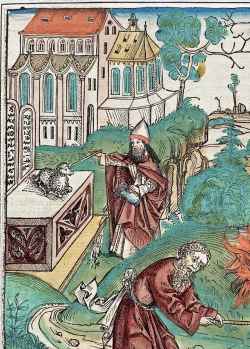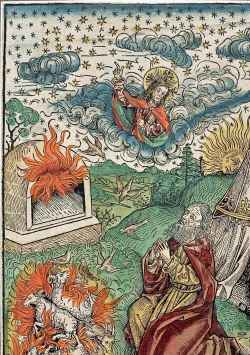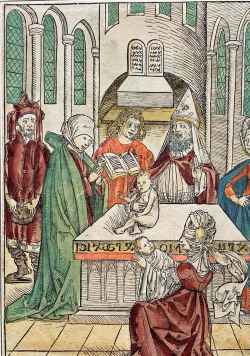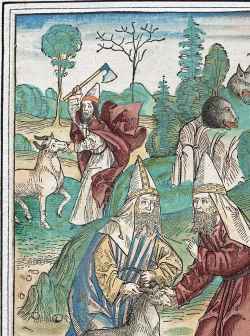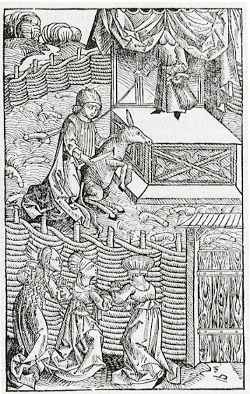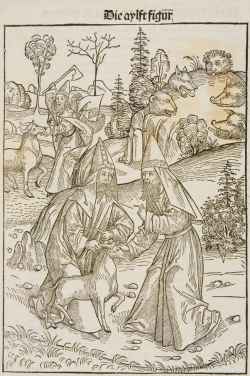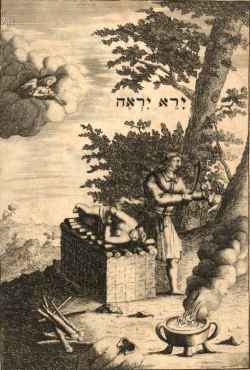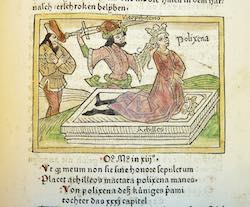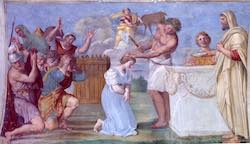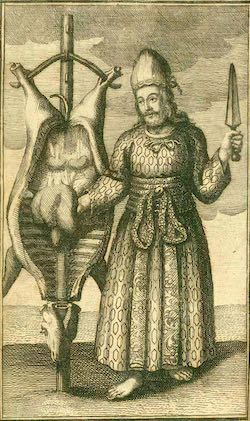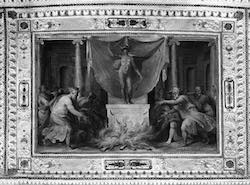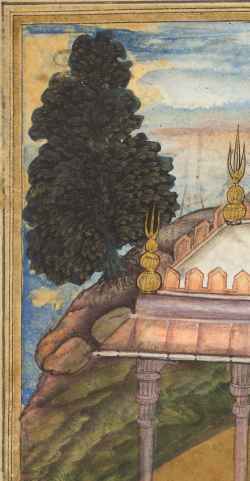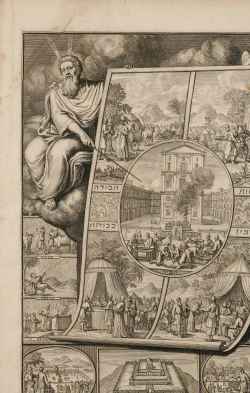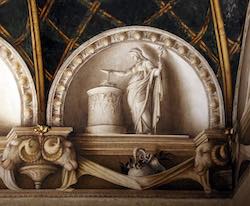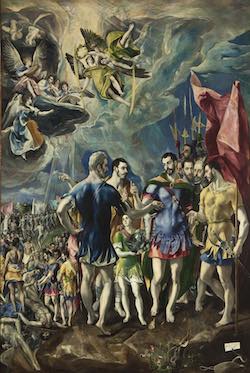Topic: 2. Sacrifice and religion: Comparisons, Antiquarians, Anthropology (16th-18th Century)
Religious sacrifices across various cultures and contexts sparked widespread interest in Early Modern Europe. As Christianity expanded into regions inhabited by "infidels" and "pagans", Europeans encountered a diverse array of sacrificial customs, ranging from the Sati rituals in India to the Aztec sacrifices in the Americas. This cross-cultural exposure captivated a wide audience, including theologians, philosophers, political thinkers, antiquarians, orientalists, missionaries, poets, artists, and even the general public. These encounters broadened the European understanding of sacrifice and led to a critical reassessment of classical and biblical sacrificial rites. This section includes:
- Sources: A selection of early modern printed materials, which include descriptions of the Americas, Asia, and Africa, alongside antiquarian and philological studies on religious sacrifice in classical antiquity and beyond. It also presents early modern works of ethnological observations and the first attempts to compare different sacrificial practices in various traditions and contexts, laying the groundwork for disciplines like the history of religions and anthropology.
- Iconographic Representations: A rich collection of images from the 16th to 18th centuries, illustrating a range of sacrificial rituals and practices as seen in different cultural and geographical contexts.
- Related Bibliography: An extensive bibliography spanning scholarly works from the 19th to 21st centuries, providing contemporary analyses and interpretations of these early studies and observations.
Animal Sacrifice and Pouring out the victim's blood (1491)
from: Stephan Fridolin, Der Schatzbehalter, Nuremberg, Koberger, November 18, 1491, fol. 24r
British Museum, London
Beasts and the birds sacrificed (1491)
from: Stephan Fridolin, Der Schatzbehalter, Nur,emberg, Koberger, November 18, 1491, fol. 18r
British Museum, London
Offering of the first-born in the Temple (1491)
from: Stephan Fridolin, Der Schatzbehalter, Nuremberg, Koberger, November 18, 1491, fol. 26r
British Museum, London
Scapegoat sent to the wilderness where five wild beasts are waiting to devour it, and secondly the sacrifice of an ox (1491)
from: Stephan Fridolin, Der Schatzbehalter, Nuremberg, Koberger, November 18, 1491, fol. 23v
British Museum, London
Opfer an Priapus (1493-1497)
from: Buchprojekt des Titels Archetypus triumphantis Romae[Germany]
Berlin, Staatliche Museen zu Berlin – Preußischer Kulturbesitz, Kupferstichkabinett, Inv. 183-1920
The Scapegoat Being Sent out into the Wilderness Where Five Wild Beasts Are Waiting to Devour It, and Secondly the Sacrifice of an Ox (1491)
from: Stephan Fridolin, Der Schatzbehalter, Nuremberg, Koberger, November 18, 1491, fol. 23v
Boston, Harvard Art Museums / Fogg Museum, Gift of Philip Hofer
A Human Sacrifice, in a Morai, in Otaheite (1785)
from: Cook, James - King, James (1785) Voyage to the Pacific Ocean, undertaken by the Command of His Majesty, for making discoveries in the Northern Hemisphere. Performed under the direction of Captains Cook, Clerke and Gore, in His Majesty's ships the Resolution and Discovery , in the years 1776, 1777, 1778, 1779 and 1780. In three volumes. and a fourth folio volume with engravings, known as Atlas
British Museum, London
Et Ketz (Mystical and Kabbalistic literature) (1710)
from: Yechacham – Rabbi Yitzchak Chaim HaCohen of the Kantorini Chazanim, Et Ketz, Amsterdam, Shlomo Proops 1710
Neoptolemus Sacrificing Polyxena at Achilles's Tomb (1473)
from: Boccaccio, G. De mulieribus claris, translator Heinrich Steinhöwel, Ulm, Johannes Zainer, [1474], n. p.
Penn Library, Wolverhampton
Iphigenia Sacrifice [1609]
Palazzo Giustiniani-Odescalchi, Bassano Romano
Ritual Sacrifice of a Calf (1712)
from: Theophili Amilii... Erörterung der dunckelsten und schwersten Schrifft-Stellen im N. Testament, Franckfurt, Samuel Heyl, 1712
Wikimedia & google books
Sacrifice to Hermes (1562 - 1566)
Villa Farnese, Camera dell'aurora, Caprarola
Abraham and Isaac Holding Objects Alluding to the Sacrifice [1510]
Cathedral, St. Gertrud Chapel, altar, Augsburg
Yaja and Upayaja perform a sacrifice for the emergence of Dhrishtadyumna from the fire (1598)
from: from Adi-parva (volume one) of the Razm-nama (Book of Wars) adapted and translated into Persian by Mir Ghiyath al-Din Ali Qazvini, known as Naqib Khan (Persian, d. 1614) from the Sanskrit Mahabharata
The Cleveland Museum of Art
King Eteez of Colchis takes Phryxus under his protection (16th Century)
from: René Boyvin ; Léonard Thiry, Histoire de Jason et de la conquête de la Toison d'or, [Paris], [n.p.], [1563?]
Bibliothèque municipale, Lyon
Sacrifice with Vesta (1518 - 1519)
Camera di San Paolo, Parma
A Ruler Performing Yajna (Fire Ritual) (1801 - 1900)
Islamic & Indian Paintings, The Dexter Collection Part II, London
Martirio de San Mauricio y la Legión Tebana (1582)
Sala de Capas, Real Monasterio de San Lorenzo de El Escorial (Spain)
Sacrifice to or by Image of Minerva (1513)
from: Poliziano, A. La Giostra di Giuliano de Medici, Florence, n. p., n. p., 1513, fol. V
Warburg Institute, Hamburg stamp, London

